the goji (Lycium barbarum), is a plant that can be grown and that belongs to the Solanaceae family, the same as more famous plants such as tomatoes, peppers And eggplant. Its origins can be found mainly in Asia, especially in China, Mongolia and Tibet. It has been grown and used for medicinal purposes in these regions for centuries. Today it is grown in various parts of the world, including some European and American countries.
Its fruits, i.e. the Goji berries they are particularly appreciated for their nutritional value and are often eaten dried or transformed into juices and food supplements. These small and delicious berries also have numerous health benefits, as they are rich in antioxidants.
In this article we see everything you need to know for grow goji in Italy and collect its precious berries.
What are the botanical characteristics of goji?
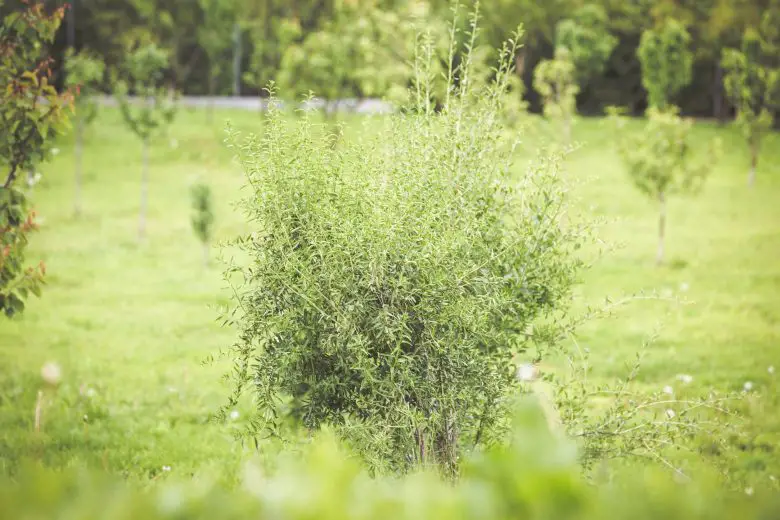
Lycium barbarum is a deciduous shrub that can reach a height of between 1 and 3 m. It has an upright habit and its branches are flexible and slightly curved. The plant has long, sharp spines along the main branches and younger branches. It emits numerous suckers at the base.
Goji leaves are lanceolate or elliptical in shape and light green in color. They are small, usually between 2 and 5 cm long, arranged oppositely along the branches. The leaves are also covered in fine, wispy hairs.
The flowers are violet, bell-shaped and fragrant. They are small, about 1 cm in diameter, and grow in hanging clusters of 2-4 flowers. The flowers have five petals and five stamens. The plant is usually self-sterile, so it needs cross-pollination to produce fruit.
The fruits of Lycium barbarum are oval or elongated, red-orange in color and have a shape similar to that of a date tomato. The berries are juicy and sweet, with a slightly tart flavor. Inside they contain numerous small flat seeds.
Other cultivated goji species
In addition to Lycium barbarum, there are other species of goji that can be grown (however Lycium barbarum is the most widespread and valuable) within the genus Lycium. They are all commonly called goji, and are:
- Lycium chinense: this species is native to eastern Asia and is cultivated for its berries, similar to those of Lycium barbarum, but slightly smaller in size;
- Lycium ruthenicum: this species is widespread in central Asia, it is always cultivated for the berries, however less valuable than the previous species.
What are the climatic requirements for growing goji in the orchard?
Goji plants can be successfully grown in different climatic zones, but regions with a temperate to mild climate are optimal.
The adult plants, being deciduous, tolerate the cold well, even if prolonged frosts could damage them. In summer the goji can easily tolerate temperatures up to about 35-40 °C. In general, average annual temperatures between 15 °C and 28 °C are however considered ideal for the cultivation of Lycium barbarum.
This plant loves direct sunlight and thrives best in areas with good sun exposure. At least 6-8 hours of full sun exposure is recommended for vigorous growth and abundant fruit production.
Considering these climatic needs, it is possible to successfully cultivate Lycium barbarum in orchards in many Italian regions, always taking into account the specific local climatic conditions.
What soil is suitable for growing goji?
The ideal soil for growing goji in orchards should be well drained and with a good supply of organic matter. In fact, the tree requires a soil with good drainage to avoid water stagnation around the roots, heavy or clayey soils tend to retain too much water and can damage the roots of the plant. It is therefore preferable a medium-textured or sandy soil which allows the water to flow freely. Goji thrives in fertile soils that provide a good amount of nutrients to the plants. The presence of organic matter in the soil, such as compost or mature manure, helps to improve soil fertility and structure. It is advisable to regularly amend organic matter to the soil before planting and during the growing season.
The plant tolerates a wide range of values of soil pHbut prefers slightly alkaline soils, with soil pH values between 6 and 8. In the case of acidic soils, it may be necessary to make corrections by adding alkaline materials such as wood ash. Before cultivating goji, it is therefore advisable to carry out an analysis of the soil to evaluate its composition and pH.
How does a Lycium barbarum plant multiply?
Goji can be multiplied through several methods of propagation, both vegetative and non-vegetative. First, it is possible use the cutting technique. It is advisable to use semi-woody cuttings during the autumn or early spring season. Take a portion of healthy branch about 10-15 cm long and remove the leaves from the lower part. Plant the cuttings in a well-drained propagating medium, such as a mixture of peat moss and perlite, and keep the soil moist, but not soggy. New roots should develop within a few weeks.
Another method of propagation is that of the division of the tufts, a technique that is usually used on mature plants. During the dormant season or in early spring, dig up the mother plant and divide the bush into several portions, making sure each section has healthy roots and shoots. Transplant the divisions to new sites in the orchard and water adequately. This method produces already mature seedlings and can speed up berry production time compared to cuttings.
Finally, it is also possible to cultivate goji by propagating it from seeds, although this method takes more time and can result in greater genetic variability than vegetative propagation. Collect the seeds from the ripe berries, clean them of the residual pulp and sow them in a light, well-drained substrate. Keep the substrate constantly moist and place the containers in a bright and warm place. The seedlings usually take several weeks or months to germinate. Later, you can transplant them into pots or in the open field.
How and when do we plant the goji we want to grow in the orchard?
To cultivate goji properly, it must be planted in the orchard during spring or autumn, when the soil is well warmed up and not subject to intense frosts. These periods offer the plants a better opportunity for rooting and adaptation.
As for the planting distance, it is advisable to leave a space of at least 1.5-2 meters between plants. This allows the plants to fully develop and have enough room for leaf growth and fruit production. The extra space between plants also allows for good air circulation, thus reducing the risk of fungal diseases.
Goji plants, especially when young, can benefit from the use of stakes to support upright growth and protect them from damage by wind or adverse weather conditions. You can use support poles and gently tie the plants to the stakes with non-harmful material like burlap bands or cotton twine. Make sure you don’t overtighten the ties to avoid damaging the stem or branches of the plant.
The stakes can be removed once the plants have developed enough to support themselves, usually after the first or second year of growth. However, in some high wind situations, it may be necessary to keep the stakes on for a longer period to ensure the stability of the plants.
How much water to give to a goji crop?
An adequate amount of water is needed to grow goji plants, which ensures healthy development, especially during periods of active growth and fruit production. However, it is important to find a balance in watering, avoiding both overwatering and underwatering.
During the first months of starting goji cultivation, plants need regular watering to encourage good root development. Keep the soil evenly moist, but not completely saturated. In the spring and summer growing season, plants require more water. Monitor soil moisture closely and water when the topsoil begins to dry out. Avoid overwatering, as standing water can damage the roots. During the fruit production period, it is important to maintain a good water supply to support the berry ripening process. So make sure your plants get rain water or regular watering.
In autumn-winter, after the leaves have fallen, irrigation must be suspended, rainwater is sufficient, even if occasional.
How to fertilize a goji crop?
To properly fertilize a goji crop it is important to provide the trees with the nutrients necessary for vigorous growth and abundant fruit production. The plant responds well to fertilizing with organic matter. You can use mature compost, well-rotted manure, pelleted manure or earthworm humus to enrich the soil around plants. Spread the organic fertilizer around the base of the plants and lightly amend the soil with a shallow hoeing. You can fertilize once or twice a year, preferably in spring or fall.
How do you prune cultivated goji plants?
Lycium barbarum plants can benefit from regular pruning to promote healthy growth, well-balanced shape, and optimal berry production.
During the first few years of goji tree growth, it is advisable to carry out a training pruning to promote a well-balanced branching structure. You can remove weak, misdirected or damaged branches to promote vigorous growth.
Subsequently, a thinning pruning is carried out, which is useful for reducing excessive vegetation and promoting better air circulation and the entry of sunlight. Remove older, diseased or damaged branches, as well as branches that cross or rub against each other.
Every 2-3 years, you can carry out a renewal pruning to stimulate the growth of new vigorous shoots. Some of the older or less productive branches can be cut back to ground level to encourage the emergence of new shoots from the base of the plant.
Finally, some goji growers practice de-bud removal, cutting off the tops of main branches to promote lateral branching. This technique can help control plant size and encourage higher fruit production, but it is important to do it correctly to avoid over-weakening the plant.
When pruning, it matters use sharp and clean pruning tools to avoid the spread of disease. It is advisable to prune gojis at the end of winter, when the plants are still in a state of vegetative rest. However, avoid pruning during periods of severe frost, as this could damage the plants.
Remember that pruning needs may vary depending on specific plant conditions, variety grown, and orchard management goals. So take a close look at your goji plants and tailor the pruning to their specific needs.
What are the pests of goji crops?
Goji plants can be attacked by various pests.
Here are the most common:
- aphids: These small, soft-bodied pests can attack the buds, leaves and flowers of goji plants. They cause deformation of the leaves, curling and the appearance of black mold due to the production of honeydew. Controlling aphids can be done by applying biological methods, such as treatment with potassium soft soap;
- cochineal: Mealybugs are parasites that attach themselves to the leaves and branches of goji plants, forming whitish or brown masses. They cause a general weakening of plants and impair berry production. The control of the cochineal can be done by applying mineral white oil (found here);
- red spider mite: these tiny mites feed on the sap of the leaves and potentially attack goji crops in dry summer periods. They can cause yellowing of the leaves, spots and a severe reduction in the vitality of the plant. Spider mite control can be achieved through the use of neem oil or by increasing the humidity of the vegetation with regular sprays of fresh water.
What are the fungal diseases that arise in growing goji?
Lycium barbarum plants can be prone to various fungal diseases. To prevent and manage them, it is important to adopt good cultural practices, such as correct pruning, cleaning infested areas, adequate irrigation and applying preventive treatments with biological fungicides when necessary. The most important of these diseases are:
- Rust is a fungal disease that can affect goji plants by appearing as orange or brown pustules on the underside of leaves. Rust can weaken the plant and reduce fruit quality and quantity. Rust control can be achieved by the application of micronized zeolite and the adoption of cultivation practices that promote good air circulation and a reduction of humidity;
- Powdery mildew is the most common cryptogamic disease for goji. It manifests itself with the appearance of a whitish patina on the leaves, branches and flowers of plants. It can hinder photosynthesis and weaken the plant. The control of powdery mildew can be achieved bysulfur application, sodium bicarbonate or potassium bicarbonate;
- Spot is a fungal disease that causes dark or brown spots to form on plant leaves. It can spread rapidly and cause premature leaf drop. Leaf spot control can be achieved by applying copper-based fungicides and removing infected leaves to reduce the spread of the fungus.
When are goji berries ripe and how are they harvested?
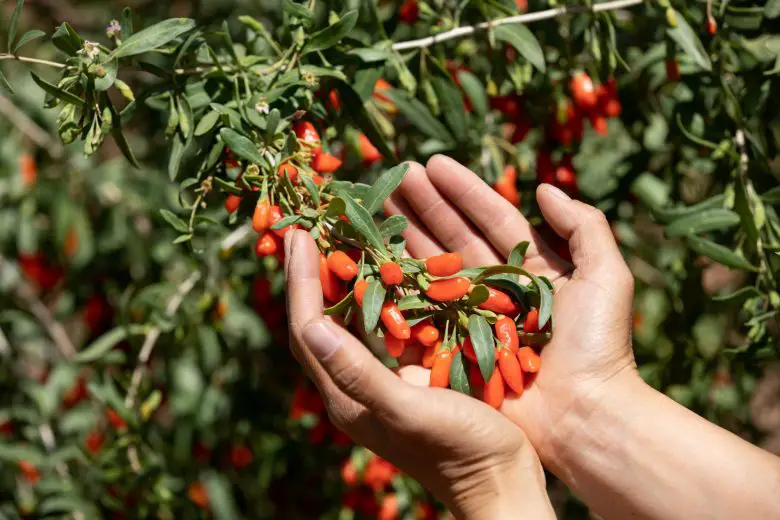
If we have managed to cultivate goji correctly, we will have ripe berries, ready to be harvested, when they reach a bright red or intense orange color. Usually, the harvest of the berries takes place during the summer or autumn, depending on the climatic conditions of the region where they are grown. Avoid picking them when they are still green or not fully colored. Ripe berries should have a soft, juicy, and slightly chewy texture. If they’re too hard, they may not be fully ripe.
Goji berries must be picked by hand, one by one, from the plant. Gently grasp the berry and pry it off the branch, making sure not to damage surrounding branches or buds when harvesting. The goji fruits ripen unevenly on the plant, so it is advisable to carry out regular harvests to collect the ripe berries and leave those still in the ripening phase for subsequent harvests.
The berries can be delicate, so it is advisable to handle them carefully when harvesting to avoid crushing or damaging them.
What are the different methods of storing goji berries?
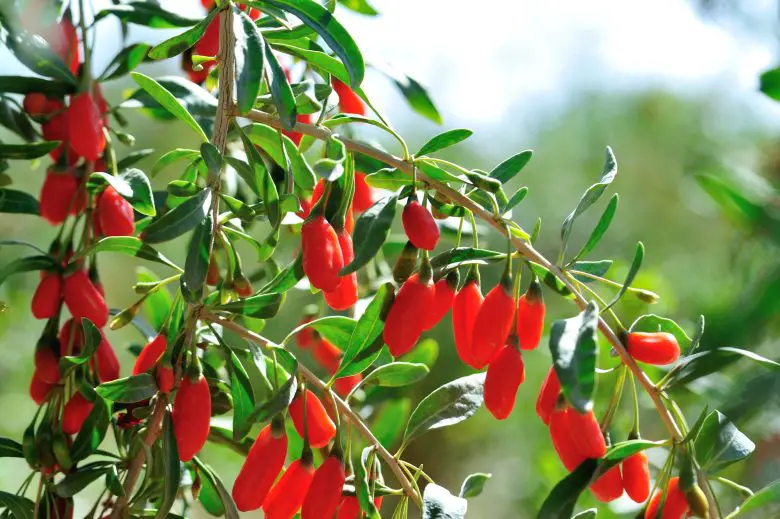
There are several methods of storing goji berries to use them for as long as possible.
Freshly picked berries can be stored in the vegetable drawer of the refrigerator and stay fresh for several days, even up to a week. Alternatively, you can freeze fresh goji berries for long-term storage. Spread the berries on a tray or baking sheet so that they are separated from each other and place them in the freezer for a few hours, until they are completely frozen. Then, transfer them to airtight food bags or freezer containers. They will stay fresh for several months in the freezer. When needed, you can take the frozen berries directly from the bag to use them in smoothies, smoothies or other dishes.
Goji fruits can also be dried for long-term preservation. You can dry them using a food dehydrator, by spreading them out on a rack or tray and letting them dry completely. Alternatively, you can air-dry them by opening them in half and placing them on a tray in a warm, dry place for several days, until dry and slightly wilted. Once dried, you can store them in airtight containers or resealable bags in a cool, dry place. Dried goji berries can stay good for several months.
Finally, you can transform them into juice or jam and store them in sterilized bottles or jars. For the juice, blend the berries with a little water and filter the juice obtained. Pour the juice into sterilized glass bottles and store them in the refrigerator. For the jam, cook the berries with sugar and lemon until you reach the desired consistency. Put the hot jam in sterilized and hermetically sealed jars.

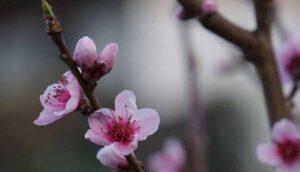
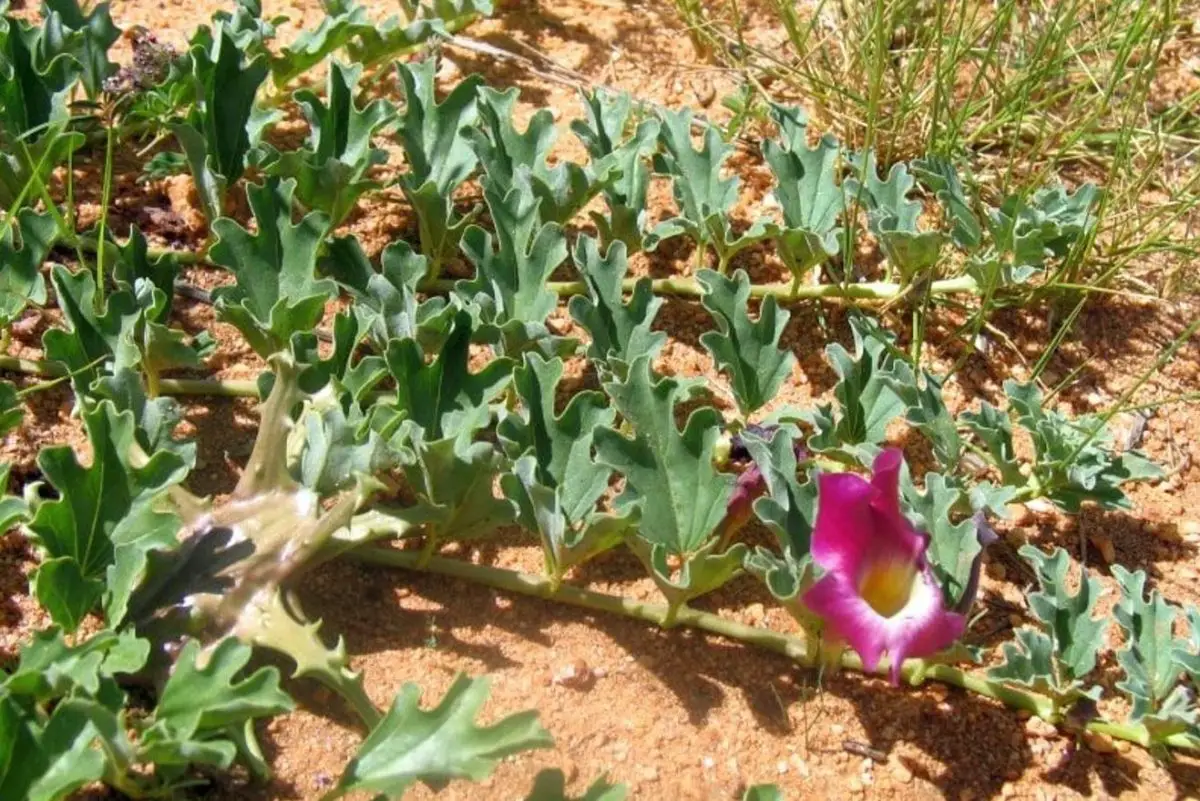
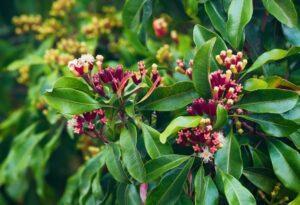
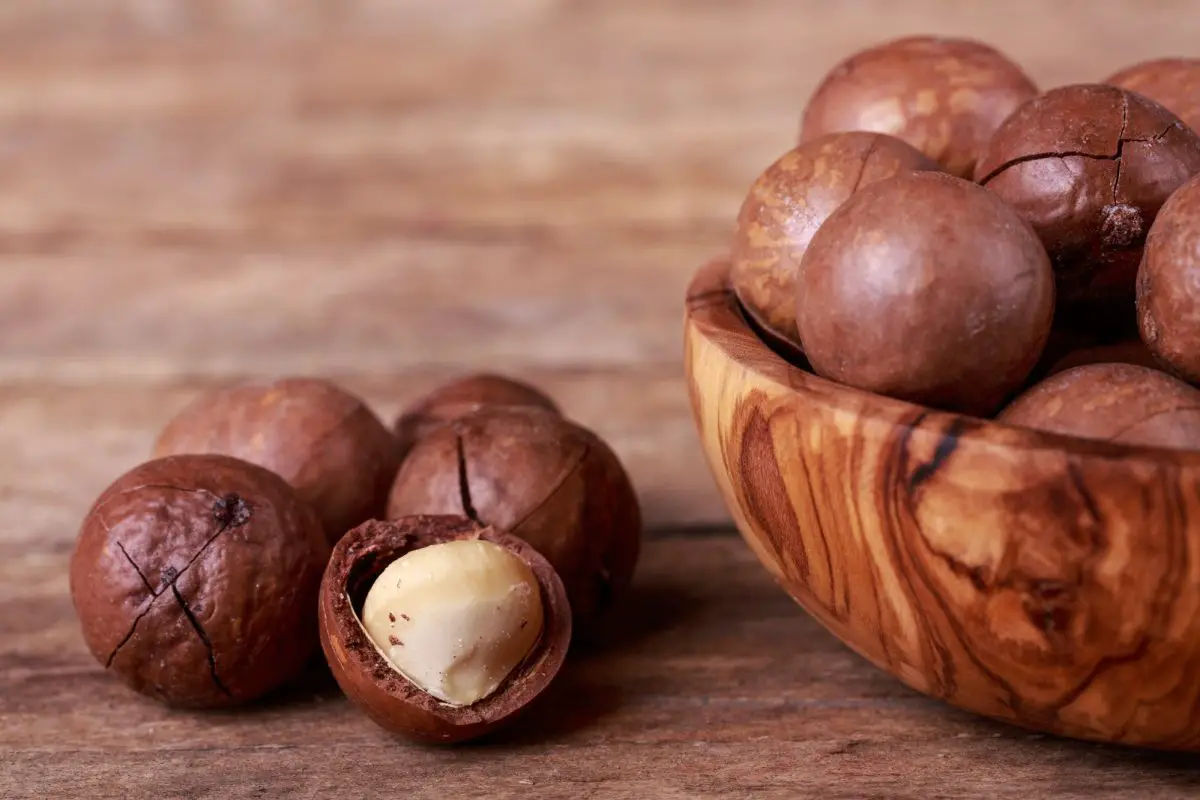
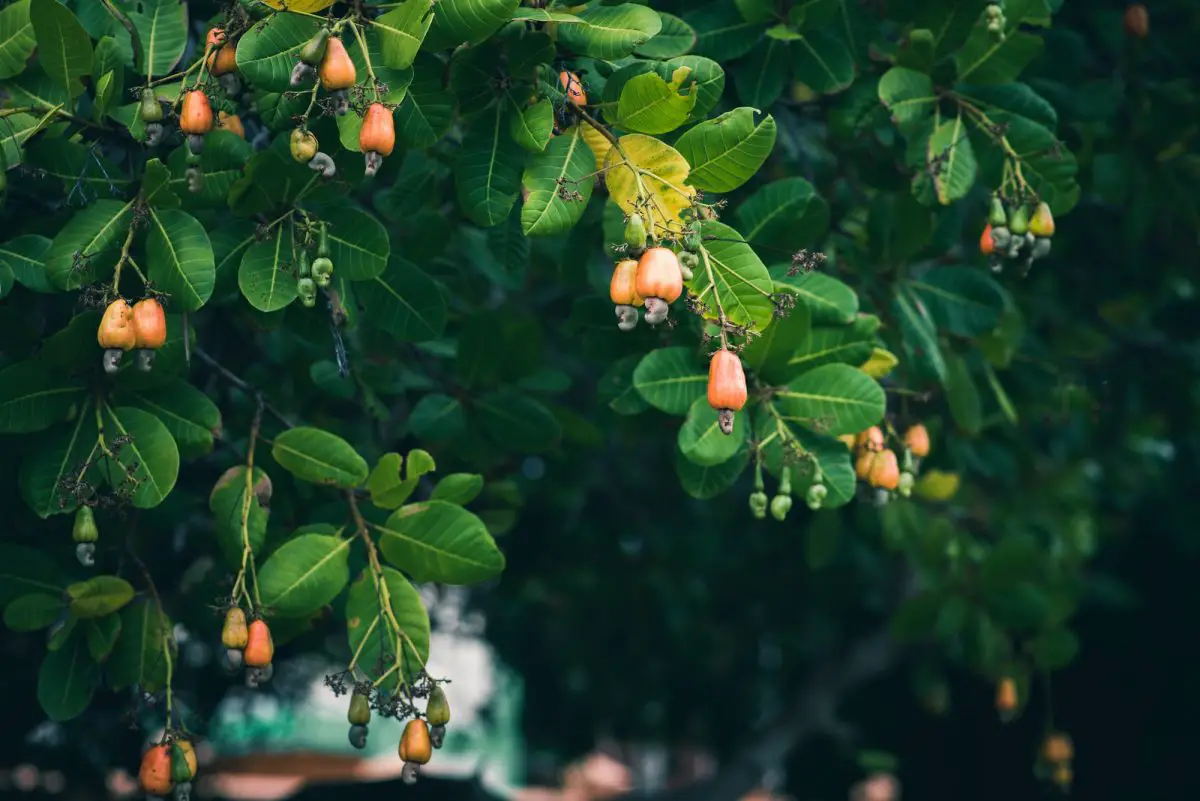
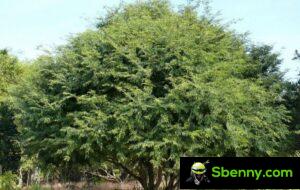
Start a new Thread